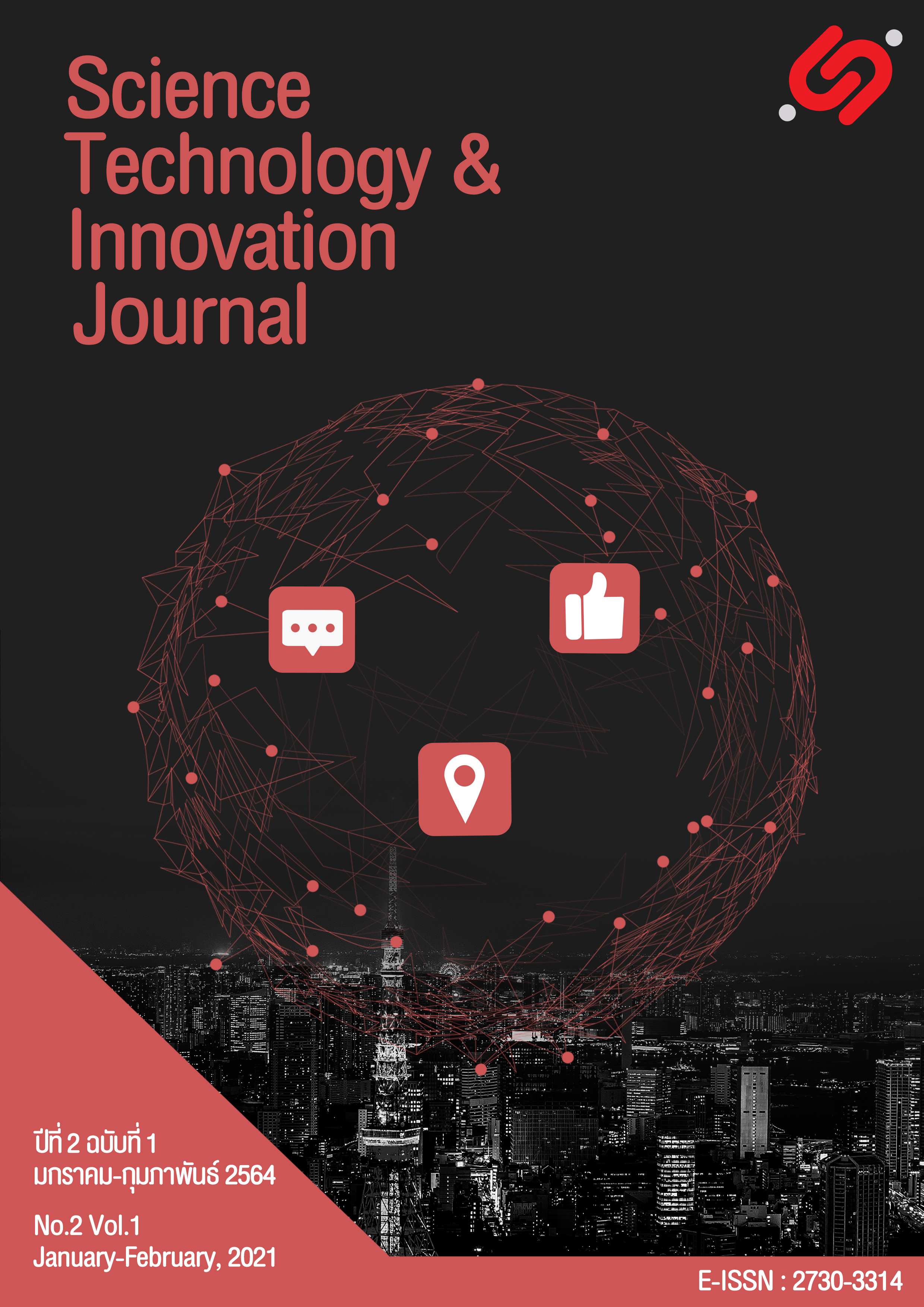กรอบแนวคิด ระบบสารสนเทศเพื่อการบริหารจัดการวัสดุเหลือทิ้งแบบมีส่วนร่วมในชุมชนอย่างยั่งยืน ชุมชนต้นแบบ เทศบาลเมืองเขารูปช้าง ต.เขารูปช้าง อ.เมือง จ.สงขลา
Keywords:
Database system, Waste Material, Management, InformationAbstract
Information on waste management in the community Is still a problem for the government sector In waste material handling This is because some of the waste materials can be processed and recycled or made into fertilizers. This process has helped reduce environmental problems for the government sector. Over the past 10 years, Thailand has an average of 20 million tonnes of waste material per year, but there are still a lot of recycled materials. Not equal to the whole number Until becoming the residual material in various communities, the researcher presented a conceptual framework for the management of waste materials with sustainable participation in the community, model community Khao Rup Chang Municipality, Khao Rup Chang Subdistrict, Muang District The conceptual framework of a system development consists of 4 steps as follows: 1) the systematic collection of information about waste materials in the community. To support and follow up on the waste management information system in the community. 3) Analysis of data using the CRISP-DM process. 4) Managing the recycling of waste materials in the community sustainably. From the preliminary trials it was shown that Community waste management system Conceptual The resulting information can be fully utilized and optimized for waste material recycling through sustainable recycling. Which effectively reduces environmental problems within the community
References
เทศบาลเมืองเขารูปช้าง แผนพัฒนาท้องถิ่นเทศบาล เมืองเขารูปช้าง (2561). สืบค้นจาก : http://www.krc.go.th/frontpage วันที่ [1 ตุลาคม 2563]
Pearse, A. C., Stiefel, M., & Cohen, S. (1980). Debaters' Comments on" Inquiry Into Participation: A Research Approach (No. 80). Geneva: United Nations Research Institute for Social Development.
Samalovlis E. 2004. Ravaluing the hierarchy of paper recycling. Sweden: National Institute of Economic Research.
Shearer, C. “The CRISP-DM model: The new blueprint for data mining“. Journal of Data Warehousing, 5(4), 13–22, 2000
กรมควบคุมมลพิษ. 2548. การแบ่งกลุ่มพื้นที่เพื่อ รองรับการจัดตั้งศูนย์จัดการขยะมูลฝอย.
กอบวิทยา (2019). การ บริหาร จัดการ ขยะ มูลฝอย (Waste management). Ramkhamhaeng Journal of Public Administration, 2(3), 84-112.
กองสาธารณสุขและสิ่งแวดล้อม เทศบาลเมืองเขารูป ช้าง (2563). สืบค้นจาก : http://www.krc.go.th/frontpage วันที่ [2 ตุลาคม 2563]
กุลกันยา ศรีสุข. (2561). การเพิ่มประสิทธิภาพ การใช้ เทคโนโลยีสารสนเทศ แบบมีส่วนร่วมเพื่อพัฒนา ฐานข้อมูล ด้าน กระบวนการจัดการขยะ ของชุมชน ในเขตองค์การบริหารส่วนตำบลบ้าน ยางอำเภอ เมือง บุรีรัมย์. Interdisciplinary Management journal
Faculty of Management Science, Buriram Rajabhat University, 2(1), 55-64.
พิรียุตม์ วรรณพฤกษ์. 2554. การเปลี่ยนแปลงระบบ การจัดการขยะที่ไม่เป็นทางการไปสู่ระบบที่เป็น ทางการ.กรุงเทพมหานคร: สถาบันบัณฑิตพัฒนบริ หารศาสตร์.
รักพงศ์ พยัคฆาคม, & อาณัติ ต๊ะปินตา. (2558). ความ สัมพันธ์ ระหว่าง ภาวะ ความเครียด กับ ประสิทธิภาพ ใน การ ทำ งาน ของ คน งาน เก็บ ขน มูลฝอย ใน เทศบาล ต่าง ๆ ใน พื้นที่ จังหวัด นนทบุรี. Journal of Humanities and Social Sciences, Rajapruk University, 1(1), 67-78.
วนษา สินจังหรีด, สุระเจตน์ อ่อนฤทธิ์, & เอกรินทร์ วทัญญู เลิศสกุล. (2562). การวิเคราะห์พฤติกรรม และ ความ ต้องการ ระบบสารสนเทศ และ ฐานข้อมูล สำหรับการจัดเก็บข้อมูลการรับซื้อกระป๋องเครื่อง ดื่ม และ ขวด น้ำ
ศิริโสภณา, & สุภาภร ณ์. (2557). ลดโลกร้อนด้วยการแยกขยะและใช้ถังขยะแยกประเภท. วารสาร หน่วยวิจัย วิทยาศาสตร์เทคโนโลยี และ สิ่งแวดล้อม เพื่อการ เรียน รู้, 1(1), 54-60.
Downloads
Published
How to Cite
Issue
Section
License
1. Every article published must be considered academic quality from 3 peers review experts per article.
2. The text or comments in this issue of science, technology and innovation journals belong to the author of the article. The journal organizers do not need to agree.
3. The editorial department of Science, Technology and Innovation Journal does not claim copy rights but provides references.


